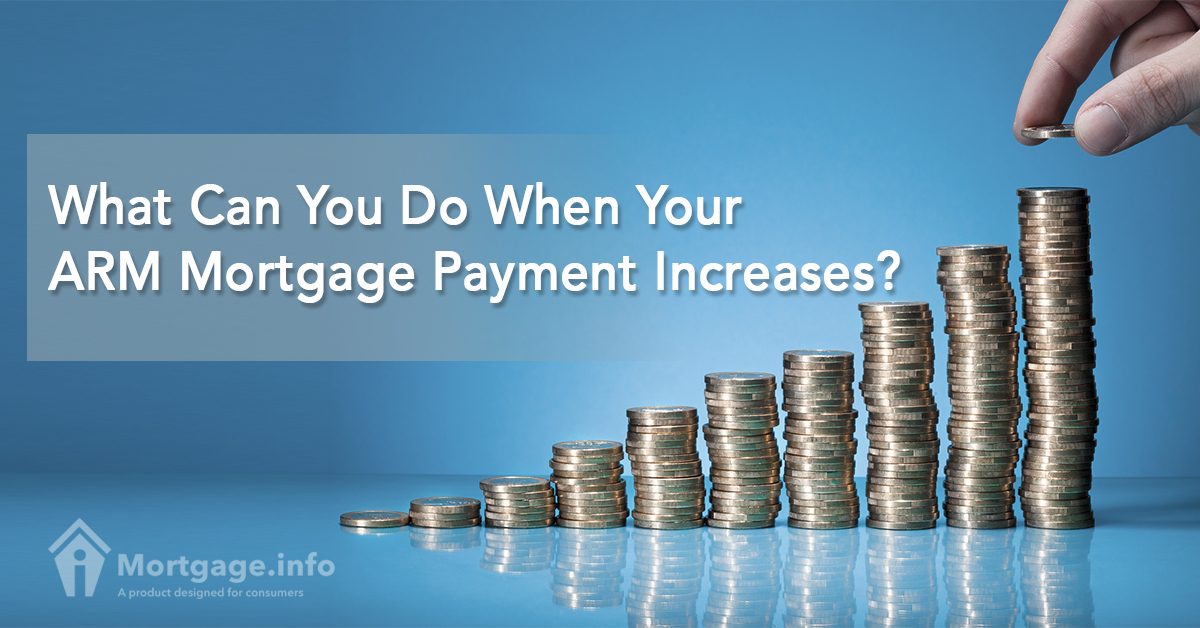The Adjustable Rate Mortgage is a great way to save money for the first few years of your mortgage. Generally, ARM interest rates are initially lower than fixed rates. It is when the adjustment period begins that you have to worry about ARM mortgage payment increases. Luckily, you have several options if you know your ARM payment is about to increase.
How to Know when Your ARM Mortgage Payment Increases
Every lender must give you notice when your ARM mortgage payment increases. You will not just receive a new mortgage statement with a surprising amount due that month. Typically, you will only have a 30-day window once you receive the notice, however, so acting fast is crucial.
You can also track what your mortgage payment will do by following the economic indicators your mortgage ties to; there are two things you should know:
- Index – The index is what you need to follow. It is the economic indicator that affects your mortgage rate. Your loan will have a fixed period which is usually 3, 5 or 7 years. After that, your interest rate can adjust annually based on the index. The most commonly used index is LIBOR – the London Inter-Bank Offer Rate. You can easily track this rate online.
- Margin – This is the amount that the lender will add to the above index to determine your new interest rate at each adjustment period. For example, if your margin is 2.25%, the lender would add that amount to the current LIBOR to determine your new interest rate.
If your new ARM mortgage payment increases, you have two options.
Refinance into Another ARM
If you love the benefit of having a lower interest rate for 3, 5, or 7 years, you can apply to refinance into another ARM. In order to do this, you have to go through the entire approval process again. There is no guarantee that you will obtain approval to refinance, but if you maintained good credit, have a steady job, have minimal debts and have reserves on hand, you may have a good shot at it. You do not have to refinance with your current lender, either, you are free to refinance with any lender you choose.
If you choose to refinance into another ARM, you should shop around. Every lender offers different rates and costs – you cannot forget about the closing costs that a new mortgage brings with it. As long as you shop with various lenders within a short period, such as a few weeks, your credit score does not get hit multiple times for the inquiries. Once you apply with each lender, they must send you a Good Faith Estimate within 3 business days. This gives you the opportunity to compare not only the interest rates, but also the costs that each lender charges to ensure that you choose the most affordable program.
Refinance into a Fixed Rate Loan
By far, the most common solution is to refinance into a fixed rate loan from an adjustable rate loan. It makes sense, because you get the security of a non-adjusting rate. However, not everyone wants the rigidity of the fixed rate loan or they enjoyed the savings they made while having the lower interest rate during the introductory period of their current ARM loan.
If you decide to refinance into a fixed rate loan, you can choose the term that you can afford and apply for the loan as you would any other loan type. This time, however, you do not have to worry about indexes and margins. The interest rate the lender quotes you at the onset of the application is the rate you pay for the entire term of the loan.
Generally, if you know you plan to stay in the home for the long-term, a fixed rate loan is the best option to choose. This way you always know what your payment will be and you have the option to pay more principal on the loan if you can afford it. You never have to worry about an increased payment because you owe more interest. The only variable in the fixed rate mortgage, as with any loan, is the amount of your escrow payment, but that changes based on your tax rate and insurance premiums.
Do Nothing when your ARM Mortgage Payment Increases
Of course, you always have the option to do nothing when your ARM mortgage payment increases. If you do not might the fluctuating payment or you like to gamble the interest rate, thinking that they might decrease for you down the road, you are welcome to keep the loan.
Some people prefer to keep their ARM because they do not want to start over with a new loan term. Any time you refinance, you start over again. For example, let’s say you had a 5-year ARM. You made it through the first five years and now the rate will increase slightly for the next year. You already made 5 years’ worth of payments and to refinance into another 30-year loan would add those 5 years back onto your loan. If you cannot afford to choose a 20 or 15-year term, you have no choice but to choose the 30-year term or keep your existing mortgage.
Deciding what to do when your ARM mortgage payment increases is a personal decision. Really thinking about your long-term plans regarding your living arrangements as well as your employment/income can help you determine the right choice for you. As always, talk to various lenders to see what options are available to you – there might be more out there than you realize that can benefit you in the long run.

